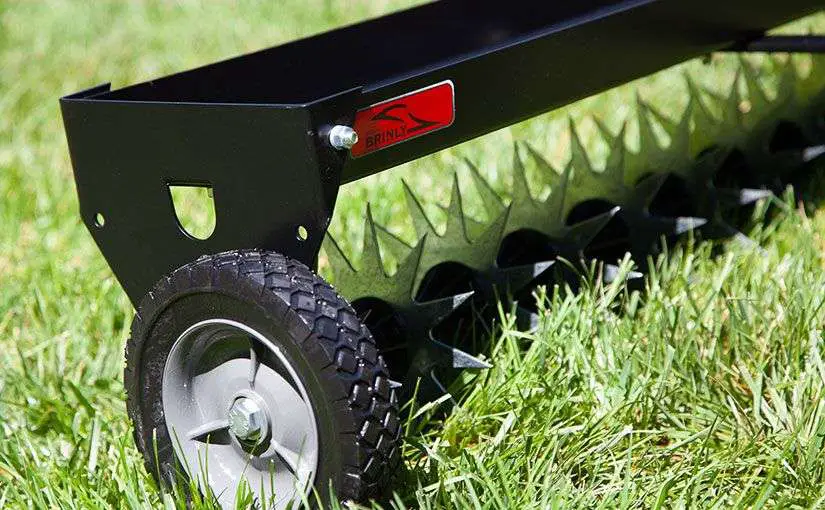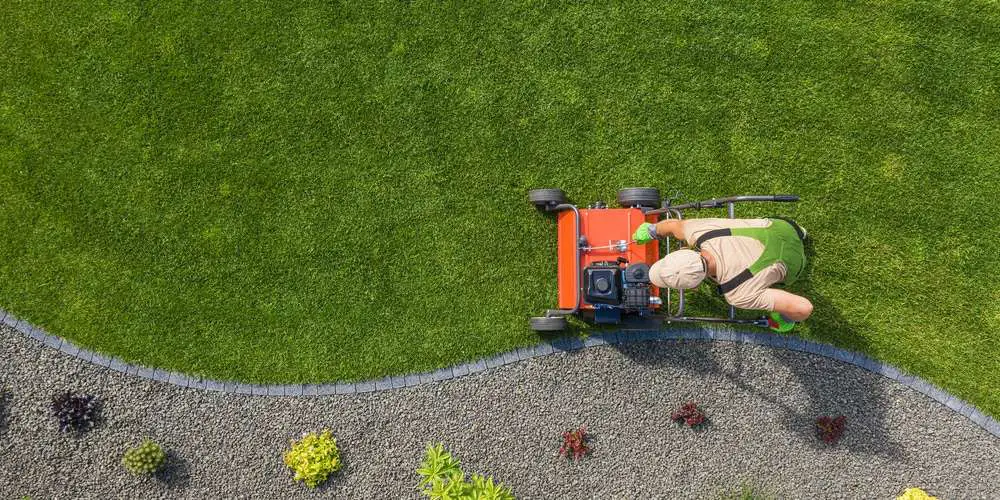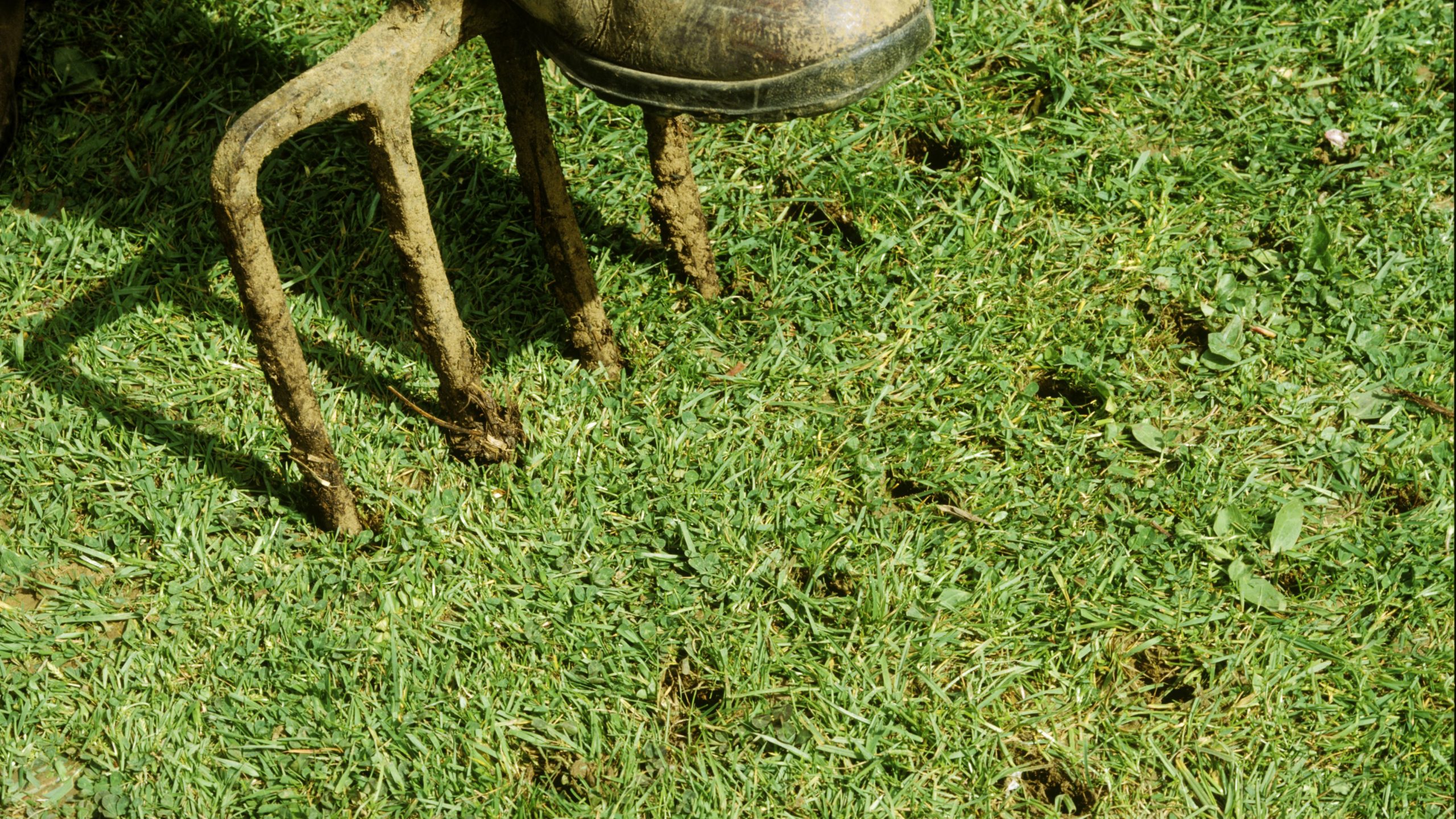When To Fertilize Your Lawn In Colorado
Its vital to correctly fertilize your lawn if its to grow thick and healthily. Before applying fertilizer, its a good idea to consider your location as lawns in the Northeast may need to be fertilized at a slightly different time to those in the Great Plains or the Southwest.
Many professional gardeners recommend fertilizing your lawn four times annually if you live in Colorado. Others say that if you notice your grass looks yellow or has stunted growth, you should apply fertilizer no matter what season it is. Fertilizer can be used on your lawn in Colorado at the following times of the year:
What Weather Is Best For Aerating In Colorado
The last thing to consider before choosing when to aerate your lawn is the weather. As we mentioned before, temperature and precipitation play a large role in determining how effective aerating is going to be for your lawn this also applies to whether you should hire someone else or do it yourself.
If conditions are ideal , then you can potentially perform aeration on your lawn within a single day. However, its important to keep in mind that the best results are achieved when aerating your lawn during several consecutive days this allows time for water and nutrients to reach plant roots which helps reduce watering/mowing requirements.
If you live in an area where the weather tends to be unpredictable, like Colorado, then it may take longer for these benefits to be achieved. If youre uncomfortable with the unpredictability of Mother Nature, then its best to aerate your lawn during periods when there is little chance of precipitation this could be early in the morning or late at night.
If conditions are less than ideal , then its best to wait until they improve before aerating your lawn. If youre unable to provide proper irrigation/watering for your grass, then its likely that the process will be futile this could actually end up doing more harm than good because roots are already weakened or dying due to lack of water!
When Why And How Often To Dethatch Lawn
When Should You Dethatch Your Lawn? Dethatching should be performed once a year on lawns that are prone to thatch development. In most cases, dethatching is performed when the grass is actively developing and capable of repairing itself, as well as when the weather conditions are favorable for survival .
You May Like: Rgs Lawn
Trust In Our Local Experience
Lawns in Colorado face many unique challenges. From big temperature swings to intense sun and local pests, getting your ideal turf here can be difficult. Thats exactly why you need a lawn care company with local, hands-on experience. Here at Integrated, were a proudly Colorado-based business with more than 20 years of experience in the greater Colorado Springs Area. So if you want your yard to live up to the Centennial States beauty, trust the local experts to get the job done!
Is It Better To Aerate In Spring Or Fall

Spring aeration, as previously mentioned, may be quite useful as well. It is possible that spring aeration is more successful than fall aeration in some regions because the soil has already been loosened by wintertime freeze and thaw cycles, making it simpler for the aerator to enter the soil during the spring aeration.
Recommended Reading: Do You Sharpen Both Sides Of A Lawn Mower Blade
Signs That It Is Time To Overseed Your Colorado Lawn
Overseeding has a number of benefits that result in a healthier lawn. A healthy and dense lawn can lead to less weeds. Also, by using a blend of disease-resistant grass seed varieties, you can work to prevent disease in the future. Youll want to consider overseeding if the lawn:
- is high-use and showing signs of wear and tear from kids and pets
- has bare or dead spots
- is thinning, patchy, or dull in color
- has a weed problem
NOTE: DO NOT overseed your lawn if you have applied a pre-emergent weed killer to it. This will prevent your grass seeds from germinating.
When Should You Aerate Your Lawn And How Often
If your lawn qualifies as one of the above types, its time to aerate! However, like with all things involved in landscaping and lawn maintenance, there are good and bad times to practice aeration to get the most bang for your buck.
Remember, aeration is technically injuring sections of grass or other plant species depending on where you aerate.
The ideal time for aeration is during your growing season . Thats because your grass will be able to heal from any minor injuries incurred from the aeration process and should recover pretty quickly. Any holes you create will be filled relatively soon.
There are also differences depending on your grass type. If your lawn has cool-season grass, you should aerate in the early spring or fall. If you have warm-season grass, prioritize aeration in the late spring.
Read Also: Trugreen Annual Plan Cost
When Is The Best Time To Aerate
Aeration is best performed just before or during periods of high growth. However, not immediately preceding or during periods of stress to the lawn. For example, heat or drought. The type of grasses that make up your lawn will determine the best time of year to aerate.
When to Aerate if You Have Cool-Season Grasses: If youre working with cool-season grasses, including bluegrass, fescue, and ryegrass, aerating during the growth periods in the spring and fall is best.
When to Aerate if You Have Warm-Season Grasses: For warm-season grasses such as Bermudagrass, buffalograss, St. Augustine and zoysiagrass, aerate during warm times of the year, between late-spring and early-autumn.
Considerations for Aerating in the Spring: In the spring, wait until youve mowed the lawn a few times before aerating. Doing so ensures the lawn will grow fast enough to recover and take advantage of the increased pore space and air exchange at the root zone that aeration creates.
One caveat, says Friell, is that any disturbance of the root zone in the spring can increase weed competition by bringing buried seeds to the surface. Applying fertilizer and a pre-emergent weed killer following aeration can reduce the potential for weed competition and increase the hardiness of the grasses. But dont apply a weed killer if you plan to overseed following aeration. It will prevent germination of the seed you put down.
Complete Guide To Aerating Your Lawn: What Is Aeration
Aeration is the process of removing soil cores or plugs from your lawn by extracting little chunks of dirt from the lawn surface. These dirt clumps are ½ inch to ¾ inch in diameter. The holes are typically 1.5 to 6 inches deep and the holes are 2 to 5 inches apart.
So, what exactly does aeration do? It allows for air circulation at the root level of your lawn. This provides the optimal soil condition for healthy grass and growth. Aerating hosts a list of benefits to your lawn.
Recommended Reading: Will Vinegar Kill Dallisgrass
Do You Really Need To Aerate Your Lawn
To answer the question, do you really need to aerate your lawn, we need to go over a little information first.
Before you can decide to do something or not, you need to be familiar with what it is, right?
Lawn aeration is just a fancy term for perforating your soil to allow water, air, and nutrients to reach the grass roots. The whole goal of aeration is to allow the roots of the grass to grow deeper and create a brighter, stronger lawn.
Aeration helps release some of the soil compaction that prevents water, air, and nutrients from circulating through the soil and getting to the roots.
Its a good idea to aerate your lawn if:
- It gets a lot of use. If you have pets and/or children who use the yard as a playground, it could benefit from aerating.
- Your home was newly constructed. The construction traffic and machinery can greatly compact the soil. In many cases, new construction even strip or bury the topsoil and establish grass on a subsoil.
- Sod and soil layering was used to establish the lawn. Soil layering is done when a finer soil from the sod is laid on top of a coarser soil.
- The grass dries out easily or feels spongy. These are both signs of too much thatch. You can find out if thats the problem by using a shovel and removing a patch of lawn about four inches deep. If the thatch is over a half of an inch, aeration is needed.
Diy Or Call In A Lawn Care Pro
If slicing up that turf youve worked so hard on makes you more than a little nervous, its best to leave it in the hands of a professional lawn care service.
But if you can handle a walk-behind mower, you can handle a dethatching machine, Callahan said.
And a dethatching machine is the way to go. A simple leaf rake wont do the trick. Dethatching an entire lawn by hand is a horrendous job and not effective, Callahan said. He recommends renting equipment to save yourself plenty of time and sore muscles. Its not a highly technical process either, he added.
There is one valuable advantage of a professional lawn service, though. Thats the effectiveness of a practiced hand and expensive equipment afforded by an economy of scale.
Also Check: Who Makes Club Cadet
Also Check: Peat Moss Lawn
Power Rake Vs Dethatcher Differences
- Robust 10 Amp motor, ergonomic, padded grip and adjustable handle for user comfort
- 14 inch dethatching path gets your work done faster
- 3-position tine depth adjustment provides greater control by removing matted layers to promote lawn health
Affiliate links and images pulled from the Amazon Product Advertising API on: 2021-07-28
Both power raking and dethatching aim at removing excess thatch in the lawn. A power rake is good for getting rid of the thick layer of debris lying on top of the soil while a dethatcher is good for removing a thin layer of decomposing organic matter that forms the topmost part of the soil in the lawn.
Power raking is a more aggressive process of removing thatch and dead matter in the lawn while dethatching is a light process that removes just a thin layer of debris that makes fertilizer absorption poor.
A dethatcher is usually spring tines that rotate and dislodge the layer of thatch and dead matter on the lawn while a power rake is usually mechanical with a dethatching blade that has rotating flails. The flails aggressively dig up thick layers of thatch from the lawn.
A dethatcher is a small machine that looks almost like push lawnmowers. Some come as extensions that you can attach to a lawn mower. On the other hand, a power rake is a heavy-duty machine that removes large amounts of thatch from a lawn.
Pro tip:A power rake can be very unforgiving on your lawn. Try to do it early to allow your lawn to heal before going dormant.
What Are Successful Aeration Techniques

Aeration is most effective when actual cores or plugs of soil are pulled from the lawn. Holes should be two to three inches deep and no more than two to four inches apart. Lawns should be thoroughly watered the day before aerating so plugs can be pulled more deeply and easily. Mark all sprinkler heads, shallow irrigation lines and cable TV lines before aerating so those lines will not be damaged.
Read Also: Humichar Lowes
What Is Power Raking
Power raking is a process for removing excess thatch from your lawn. Power raking in Colorado Springs is great a way to remove the dead debris and crust that builds up on a lawn over winter. It is also a gentle way to remove thatch from the lawn without causing the significant damage that dethatching can cause.
Donât Miss: American Made Lawn Mower
Make Sure To Water Properly For The Best Results
It is really important to make sure that once the overseeded grass is watered, it remains moist during germination. Be careful not to overwater or the seeds will drown. Depending on the time of year, you may need to water 2-4 times a day in short-duration-bursts to keep from overwatering and washing the seed away. If a seed is left to dry out after it has taken up water, it will not survive.
Read Also: Lowes Hydroseed
How Do I Know If My Lawn Needs Aeration
Lawn Aeration and Seeding: 10 Signs Its Time To Do It
What To Do Before Aerating
- Clear your yard of any debris.
- If you have any weeds that you dont want spreading, its best to pull those out.
- Mow your grass short . This will make the aeration process easier and will be good preparation for your lawn if you plan on overseeding.
- Water your lawn. Youll want to make sure that the soil is soft enough for aeration, especially if youre doing core aeration.
Read Also: Home Depot Hydroseed
What Is The Best Time Of Year To Aerate Your Lawn
Now that you know more about lawn aeration, you may be wondering when is the best time to aerate your lawn? Thats a great question, and its important that you aerate it at the proper time to get the results you want.
For the most part, the type of grass you have will determine the best aeration window, but both windows have some summertime overlap. So yes, you can aerate the lawn in the summer just keep reading.
Warm weather grasses include Zoysia, Carpetgrass, Bermuda, Buffalo, Centipede Grass, Bahiagrass, and St. Augustine. You should aerate warm weather grass when the weather gets warm through the late spring and early summer. Avoid heat waves and droughts, but these grasses are pretty forgiving.
Cool weather grasses include Bentgrass, Kentucky Bluegrass, Rye Grass, and Tall and Fine Fescues. You should aerate cool weather grasses when the weather starts to cool, which is usually during late summer and early fall.
When Should I Aerate My Lawn In Colorado
When Should You Aerate Your Lawn in Colorado? As a general rule, aerating your grass in Colorado should be done during the colder months of the year. Many homeowners aerate their lawns at the start of the spring season or at the end of the fall season.
- Increased air interaction between the soil and the surrounding environment.
- Increased water absorption by the soil.
- Increased absorption and use of fertilizer.
Improved decomposition of thatch.
Read Also: Estimating Lawn Mowing
Lawn Aeration In Colorado
Over the course of a year, its normal for soil to become compacted and for its nutrient levels to drop. Left unaddressed, though, this can cause large sections of your yard to die. But when you give your grass a hand with lawn aeration in Colorado, youre ensuring its long-term health and well-being. Performed twice a year, quality aeration service can benefit your grass in a multitude of significant ways, including:
- Easier access to groundwater, oxygen, and nutrients.
- Greater resistance to diseases, fungi, weeds, and pests.
- Loosened soil which allows for easier root penetration.
- An overall increase in your grass health.
Should You Aerate Your Lawn

If youre unsure about whether your lawn is suitable for aeration, lets break down which lawns can really benefit from the practice.
- Lawns that are used heavily. For instance, lawns that are frequented by kids are often trampled and can become compacted over time. Lawns that are visited by animals are also good candidates for the same reasons
- Lawns that dry out easily, either because of the environment or weather. If your lawn feels a little spongy, it might be because theres too much thatch in the top layer
- Lawns that were made with new homes. In these cases, topsoil is usually stricter buried and the remaining grass might be compacted
Also Check: How To Bring My Lawn Back To Life
How Often Do You Need To Aerate Your Lawn
For most lawns, annual aeration is more than enough. However, if your lawn is subject to a lot of traffic and gets compacted easily, aeration twice a year in both spring and autumn may be the most beneficial.
A good rule of thumb is to keep an eye on any issues appearing on your lawn. If huge puddles emerge whenever it rains or youve got a heavy thatch build-up, its time to aerate.
When Should You Aerate Your Lawn In Denver
The best time to aerate is in the fall or spring when it is not cold. Aeration removes 2- to 3-inch plugs from the lawn and deposits them onto the lawn. Before aeration, you should water the lawn till moist so the plugs are pulled out long enough versus the lawn being too dry and causing the plugs to break off.Nov 30, 2020
Related
You May Like: What Will Kill Wild Violets
The Best Time To Aerate Your Lawn
Though aeration helps your lawn, it also stresses it. To ensure it recovers quickly from any damage, only aerate it during its peak growing season. This varies based on the type of grass you have and your location. In cool climates and for cold-season grasses, early spring and early fall are good times. For hotter climates and warm-season grasses, late spring and early summer are best.
